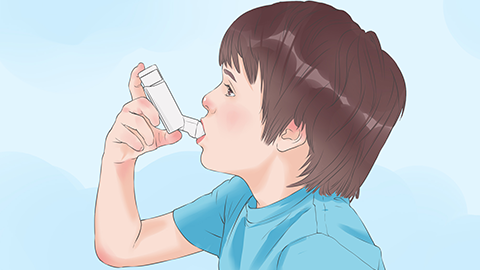What are the main symptoms of bronchial asthma?
Under normal circumstances, the main symptoms of bronchial asthma include recurrent wheezing, shortness of breath, chest tightness, coughing, and difficulty breathing. A detailed analysis is as follows:

1. Recurrent Wheezing
After exposure to allergens, cold air, exercise, or other triggering factors, the airway smooth muscles spasm, causing airway narrowing. As air flows through the narrowed airway, turbulence occurs, resulting in wheezing. This manifests as a high-pitched whistling or crowing sound during respiration.
2. Shortness of Breath
Due to airway narrowing and impaired ventilation function, patients feel breathless and labored, especially during exhalation. The severity of shortness of breath varies depending on the condition. Mild cases may experience it only after vigorous activity, while severe cases may have noticeable breathlessness even at rest, sometimes requiring a sitting or forward-leaning position to assist breathing.
3. Chest Tightness
During an asthma attack, increased airway resistance and impaired gas expulsion lead to changes in intrathoracic pressure. Inflammation also stimulates airway nerve endings, causing sensations of chest fullness or pressure. This tightness may occur before or simultaneously with wheezing and shortness of breath.
4. Coughing
This is often a dry, irritating cough, sometimes accompanied by small amounts of white mucus sputum. In the early stages of bronchial asthma or in mild cases, coughing might be the only symptom, typically occurring at night or in the early morning.
5. Difficulty Breathing
As the disease progresses, airway narrowing worsens significantly, severely affecting gas exchange. Patients may experience obvious difficulty breathing, characterized by increased respiratory rate, shallow breathing, and involvement of accessory respiratory muscles. Symptoms may include flaring of the nostrils and the use of three-point breathing (tracheal tug, intercostal and subcostal retractions). Severe cases may lead to cyanosis, where the lips, fingernails, and other areas turn bluish-purple.
In daily life, individuals should try to avoid contact with allergens such as pollen, dust mites, and animal fur. Regular room cleaning and changing bed sheets and covers are recommended. Indoor air circulation should be maintained, and outdoor exposure should be minimized during pollen seasons. Additionally, regular physical exercise can help strengthen overall physical health.








